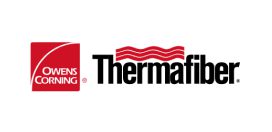Specifying the right air handling insulation is a critical design element in the delivery of air in commercial buildings. For occupants, proper commercial building insulation for air duct systems help ensure room-to-room comfort by delivering conditioned air at design temperatures. For owners, fiberglass insulated air ducts help optimize the energy efficiency, health, and occupant satisfaction of a building.
3 great reasons to insulate air duct systems
1. Energy Conservation
Fiberglass insulated ducts reduce the heat loss or heat gain into or out of the duct system which translates into energy and dollar savings. Heated or cooled air is delivered efficiently, at design temperatures, without over taxing the energy source.
2. Condensation Control
Insulated air duct systems reduce condensation on ducts and equipment surfaces to decrease opportunities for microbial growth and other moisture-related building damage. Specifying the right insulation thickness for your building conditions is critical for condensation control.
3. Noise Reduction
Fiberglass duct liner and duct board insulation are engineered to absorb noise. Without fiberglass air handling insulation, the acoustical environment of mechanically conditioned buildings can be greatly compromised. Loud mechanical systems can impact occupant comfort and reduce productivity.
Types of fiberglass duct insulation
There are several types of fibrous duct insulation to choose from, depending on your application needs. All of these options can help optimize energy savings, condensation control and noise reduction when properly installed. Click on an option to learn more.
Fiberglass Duct Liner
–+Fiberglass Duct Board Systems
–+Fiberglass duct board (ductboard) systems control heat loss or gain through the duct wall, help to control moisture condensation, and are substantially air-tight when properly fabricated and sealed. These systems are fabricated either in the contractor’s shop or at the job site. Click here for more information on fiberglass duct board fabrication.











